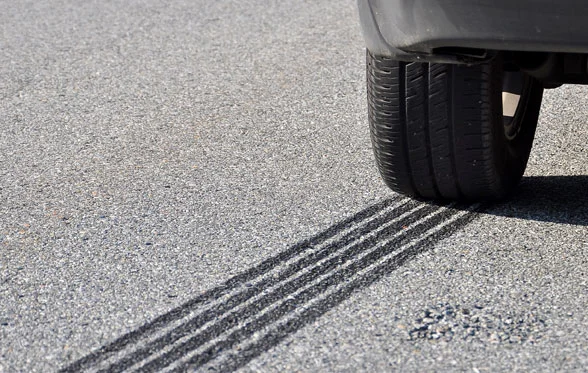Currently, there are two European Union (EU) Regulations which specify the average carbon dioxide (CO2) emissions performance targets for manufacturers of new light duty vehicles; EC Regulation No. 443/2009 covering passenger cars (i.e. M1 category vehicles) and EU Regulation No. 510/2011 covering light commercial vehicles with a GVW not exceeding 3500 kg (i.e. N1 category vehicles). Regulation (EC) No. 443/2009 specifies average CO2 emissions targets of 130 g/km for passenger cars registered before 31st December 2019 and 95 g/km for passenger cars registered on or after 1st January 2020. Regulation (EU) No. 510/2011 specifies average CO2 emissions targets of 175 g/km for light commercial vehicles registered before 31st December 2019 and 147 g/km for light commercial vehicles registered on or after 1st January 2020. In both cases, these average CO2 emissions targets are based on CO2 emissions data determined following the New European Drive Cycle (NEDC). However, to cater for the introduction of the Worldwide Harmonised Light Duty Vehicle Test Procedure (WLTP), as required by (EU) Regulation No. 2017/1151, both of these Regulations have recently been amended to introduce a methodology which allows vehicle manufacturer specific WLTP based average CO2 emissions targets to be determined for calendar years 2021 and beyond that are of equivalent stringency to the specified NEDC based targets.
To implement the next phases of CO2 emissions reductions beyond 2020, the European Commission are proposing to repeal both of these existing Regulations and replace them with one new Regulation which covers both passenger cars and light commercial vehicles. This new Regulation would repeal and replace the existing Regulations with effect from 1st January 2020, and a draft version of this new Regulation has recently been made available by the European Commission for public comment.
In terms of average CO2 emissions targets, for calendar years 2020 to 2024 inclusive, the draft replicates the targets specified in (EC) No. 443/2009, as last amended by (EU) No. 2017/1502, and in (EU) No. 510/2011, as last amended by (EU) No. 2017/1499. However, for calendar years 2025 and beyond, the draft specifies the following reductions in the average CO2 emission targets compared to the average CO2 emissions target applicable for the 2021 calendar year:
- A 15% reduction for calendar years 2025 to 2029 inclusive.
- A 30% reduction for calendar years 2030 and beyond.
Many of the other requirements contained in the existing Regulations are carried over to the draft new Regulation unchanged. For example, the exemption for vehicle manufacturers that are responsible for less than 1,000 new registrations within the EU per year remains unchanged, the system whereby small volume manufacturers can apply for a derogation from the average CO2 emissions target remains unchanged and the excess emissions premium remains at €95 per g/km per vehicle. However, there are some areas where the requirements contained in the draft new Regulation differ from those contained in the existing Regulations. For example:
- In the existing Regulations, the calculations to establish specific CO2 emissions targets and the vehicle manufacturer's compliance with those targets are based on "mass in running order" figures. In the draft new Regulation, these calculations are also based on "mass in running order" figures for calendar years 2020 to 2024 inclusive. However, for calendar year 2025 and beyond, the draft new Regulation specifies that "test mass" figures, as used for WLTP testing, are used instead of "mass in running order" figures for these calculations.
- In the existing Regulation, the reference value (M0), representing the average mass of vehicles registered in the EU, is reviewed and updated every three years. In the draft new Regulation, this three yearly review continues for calendar years 2020 to 2024 inclusive. However, from the 2025 calendar year onwards, the draft new Regulation specifies that this reference value must be reviewed and updated every two years.
- To incentivise the introduction of zero and low emissions vehicles, for calendar years 2025 and beyond, the draft new Regulation introduces a zero and low emission vehicles (ZLEV) factor. This ZLEV factor is based on the percentage of a vehicle manufacturer's registrations that have a CO2 figure not exceeding 50 g/km and is applied when calculating a vehicle manufacturer's specific CO2 emissions target. Vehicle manufacturers whose percentage of zero and low emission vehicles is higher than the specified EU fleet wide benchmark will benefit from a higher specific CO2 emissions target.
- In (EC) No. 443/2009, "niche" vehicle manufacturers that are responsible for less than 300,000 new registrations within the EU per year can apply for a derogation from the average CO2 emissions target. In the draft new Regulation, derogations for such "niche" vehicle manufacturers will continue to be available for calendar years 2020 to 2024 inclusive, but will not be available for calendar year 2025 and beyond.
- The draft new Regulation proposes an amendment to EC Regulation No. 715/2007 on emissions to require "in service" CO2 emissions and fuel consumption testing on light duty vehicles to verify their compliance with the figures recorded on their Certificates of Conformity.
